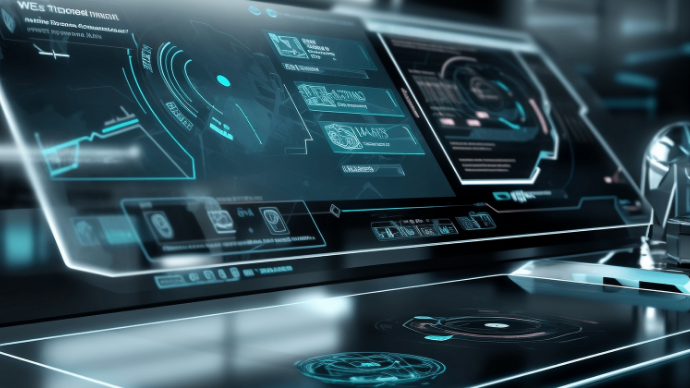If the man-machine battle between AlphaGo and Lee Sedol in March 2016 only had a big impact in the scientific and go circles, then its match with the top-ranked world Go champion Ke Jie in May 2017 brought artificial intelligence technology to the public eye. AlphaGo, the first artificial intelligence program to beat a human professional Go player and the first to defeat a world champion, was developed by a team led by Demis Hassabis at Google's DeepMind and works primarily on the principle of "deep learning."
In fact, as early as 2012, deep learning technology has been widely discussed in the academic community. In this year's ImageNet Large-scale Visual Recognition Challenge ILSVRC, AlexNet, a neural network structure with five convolutional layers and three fully connected layers, achieved a top-5 (15.3%) historically best error rate, compared to the second-place result of 26.2%. Since then, there have been more layers and more complex neural network structures, such as ResNet, GoogleNet, VGGNet and MaskRCNN, and last year's more popular generative adversarial network GAN.
Whether it is AlexNet, which won the visual recognition challenge, or AlphaGo, which defeated Go champion Ke Jie, their implementation cannot be separated from the core of modern information technology - the processor, whether the processor is a traditional CPU, or a GPU. Or the emerging special acceleration component NNPU (NNPU is short for Neural Network Processing Unit). In a small symposium on Architecture 2030 at ISCA2016, Hall of Famer Professor Xie Yuan of UCSB summarized the papers that have been included in ISCA since 1991, and the papers related to dedicated acceleration components began in 2008 and peaked in 2016. More than the three traditional areas of processors, memory, and interconnect architecture. In this year, the paper "A Neural Network Instruction Set" submitted by the research group of Chen Yunji and Chen Tianshi from the Institute of Computing Technology of the Chinese Academy of Sciences is the highest scoring paper of ISCA2016.
Before specifically introducing AI chips at home and abroad, some readers may have such doubts: Aren't they all talking about neural networks and deep learning? Then I think it is necessary to elaborate on the concept of artificial intelligence and neural networks, especially in the "Three-year Action Plan to Promote the development of a New generation of artificial intelligence Industry (2018-2020)" released by the Ministry of Industry and Information Technology in 2017, the description of the development goals is easy to feel that artificial intelligence is a neural network, and AI chips are neural network chips.
The overall core basic capabilities of artificial intelligence have been significantly enhanced, smart sensor technology products have achieved breakthroughs, design, foundry, and sealing technology have reached the international level, neural network chips have achieved mass production and large-scale application in key areas, and the open source development platform has initially the ability to support the rapid development of the industry.
Not so much. Artificial intelligence is a very, very old concept, and neural networks are just a subset of the artificial intelligence category. As early as 1956, John McCarthy, the Turing Award winner known as the "father of artificial intelligence," defined artificial intelligence as "the science and engineering of creating intelligent machines." In 1959, Arthur Samuel gave the definition of machine learning, a subfield of artificial intelligence, as "the ability of a computer to learn, not through pre-accurately implemented code", which is currently recognized as the earliest and most accurate definition of machine learning. The neural networks and deep learning that we are familiar with everyday belong to the category of machine learning, and are all inspired by the brain mechanism. Another important research area is the pulse neural network, which is represented by the brain Computing Research Center of Tsinghua University and Shanghai Xijing Technology.
Well, now we can finally introduce the development status of AI chips at home and abroad, of course, these are my personal observations and humble opinions, and the peep view is right to throw a brick.
Due to their unique technology and application advantages, Nvidia and Google account for almost 80% of the market share in AI processing, and this share is expected to expand further in 2018 following Google's announcement of its Cloud TPU open service and Nvidia's launch of autonomous driving processor Xavier. Other manufacturers, such as Intel, Tesla, ARM, IBM, and Cadence, also have a presence in the AI processor space.
Of course, these companies focus on different areas. For example, Nvidia is mainly focused on GPU and driverless areas, while Google is mainly for the cloud market, Intel is mainly for computer vision, and Cadence is mainly to provide accelerated neural network computing related IP. If these companies are also mainly biased towards hardware areas such as processor design, ARM is mainly biased towards software, focusing on providing efficient algorithms for machine learning and artificial intelligence.
Note: The above table is the latest publicly available data for each development unit as of 2017.
No. 1 -- Nvidia
In the field of artificial intelligence, Nvidia can be said to be the most involved and largest market share of the company, its product lines across self-driving cars, high-performance computing, robotics, healthcare, cloud computing, game video and many other fields. Its new AI supercomputer, Xavier, for self-driving cars, is, in the words of NVIDIA CEO Jen-Hsun Huang, "a really great effort in SoC that I know of, and we've been working on chips for a long time."
Xavier is a complete system-on-chip (SoC) that integrates a new GPU architecture known as Volta, a custom 8-core CPU architecture, and a new computer vision accelerator. The processor delivers high performance of 20 TOPS (trillion operations per second) while consuming only 20 watts. A single Xavier person


 EN
EN









